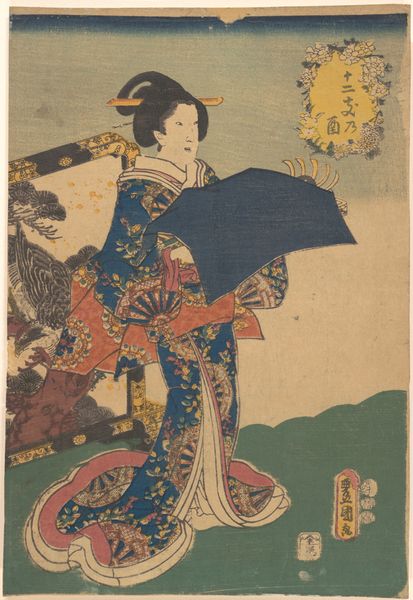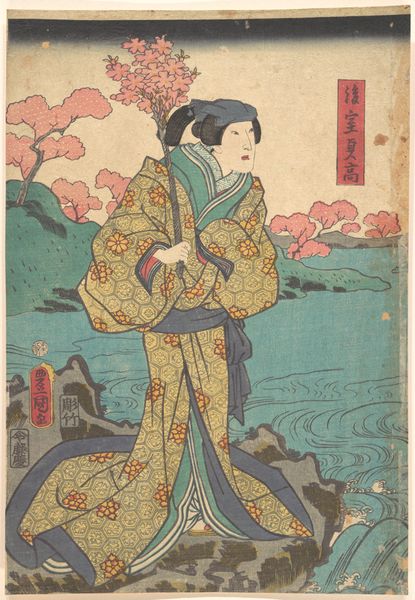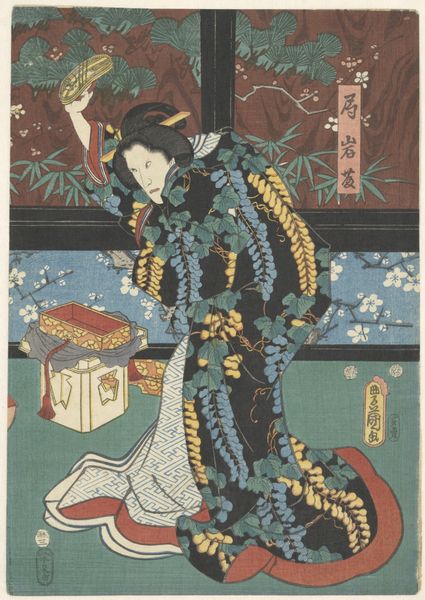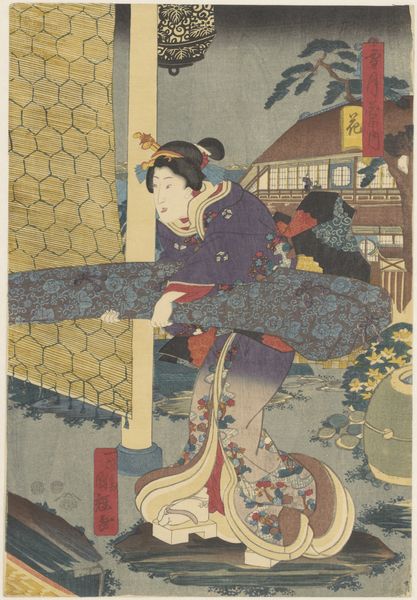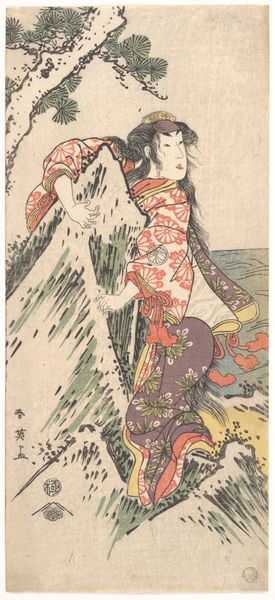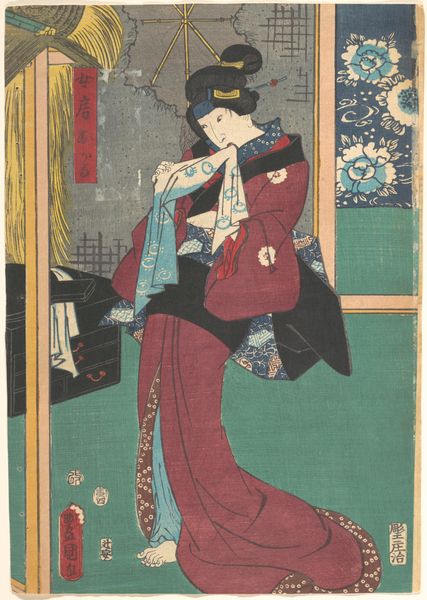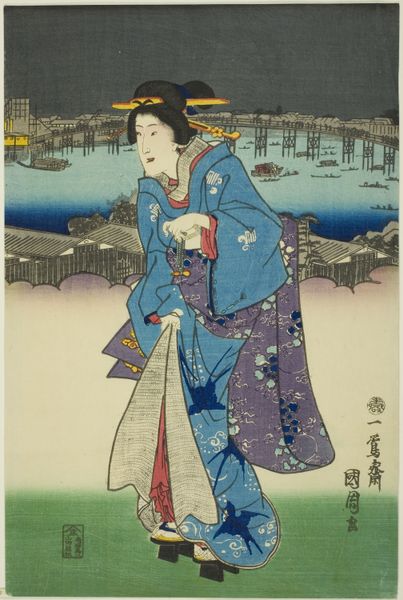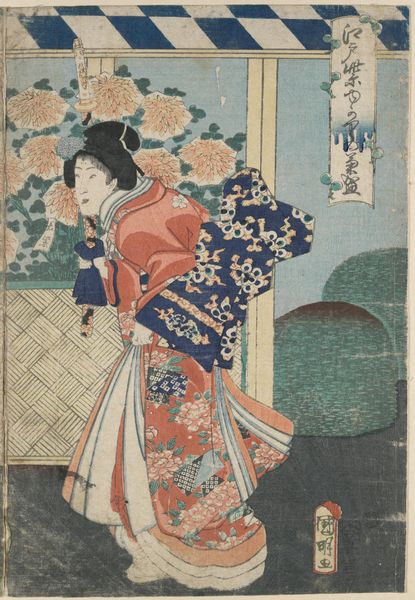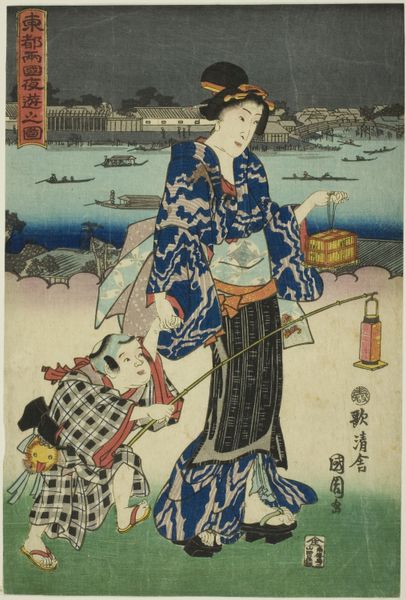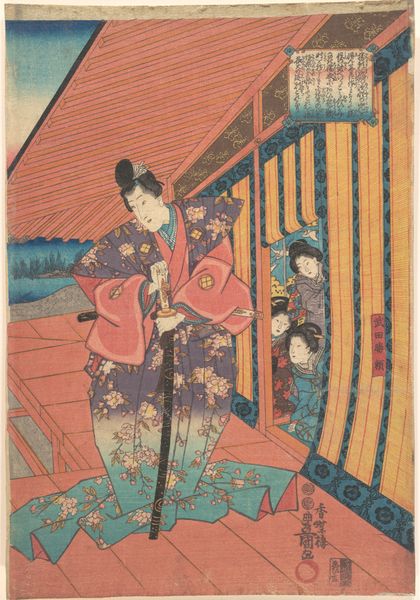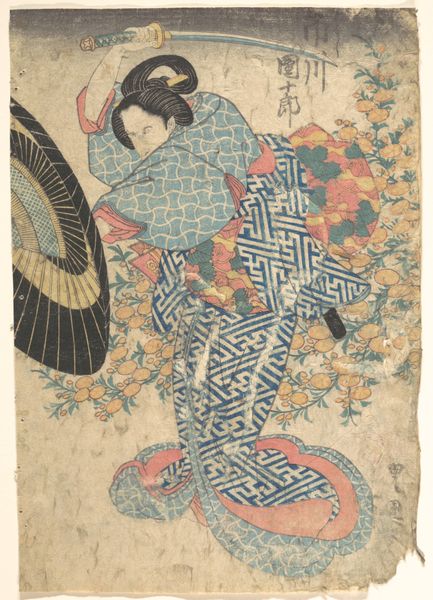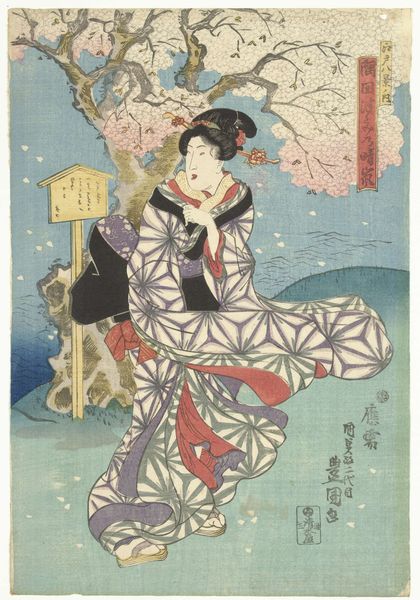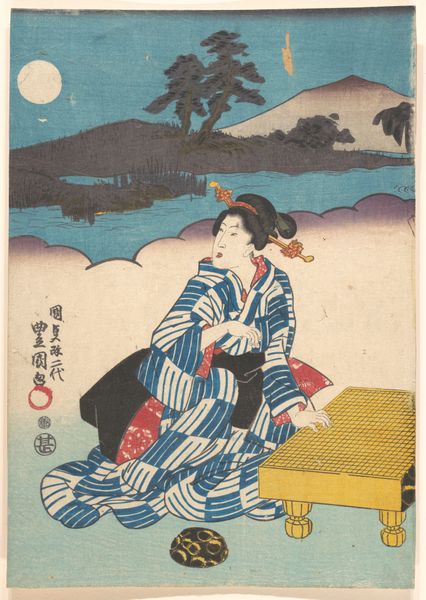
print, woodblock-print
#
portrait
#
water colours
#
ink painting
# print
#
asian-art
#
ukiyo-e
#
figuration
#
woodblock-print
#
calligraphy
Dimensions: Image: 14 1/4 in. × 10 in. (36.2 × 25.4 cm)
Copyright: Public Domain
Curator: This print, simply titled "Print," comes to us from the hand of Utagawa Kunisada, crafted sometime between 1786 and 1854. Editor: My first thought is of the surface—a very considered and subtle arrangement of texture through both the materiality and process. There's an unexpected stillness, given the visual detail. Curator: Indeed, and a large part of that is its masterful composition. Kunisada leverages both color and pattern to construct a visual space that feels both intimate and expansive. The patterning, particularly on the Kimono, has an interesting symbolic structure. Editor: Agreed. Beyond the visual design, look closely at how these woodblock prints were actually made. The hand of many artisans would have been on each print—consider the material processes and labour required for an edition of prints of this nature. It raises questions about access and the distribution of these kinds of works. Curator: It's intriguing to consider the context in which this work would have been consumed—who would have seen it and what meaning would it have held for them. Is it a window into an older, maybe idealized society and culture? How can we read this work through a formal analysis of pictorial space? Editor: The materiality and craftsmanship allow for that consideration. The texture of the paper, the specific ink used for the linework...these aren't accidental; they speak to artistic intentions, but also to social hierarchies within artistic production itself. This work seems both precious and mundane at once. Curator: Perhaps this contrast captures an essential element of Ukiyo-e: the blending of everyday life and art. It pushes back against rigid distinctions between the popular and elevated art traditions, while exploring ideas through structure. Editor: And challenges our assumptions about fine art traditions, the labor inherent in "high art," and consumption as an active dialogue—material to object to viewer, and back again. Curator: The interplay you suggest offers avenues into interrogating those historical conditions, how the structure supports different potential interpretations. Editor: Precisely, these material processes reveal and reify these power structures, creating new ones as they engage viewers and shift across contexts and eras. The artist, through the material of choice and labour in their execution, builds into something new for an active present.
Comments
No comments
Be the first to comment and join the conversation on the ultimate creative platform.
